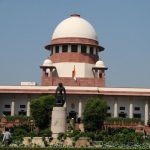 Professor Satya Narayan Misra* in Bhubaneswar, August 5, 2024: Last Thursday a Supreme Court 7 judge bench decreed 6-1 that further sub-classification of SC/ST by the states can be permitted to ensure the grant of quota to more backward castes within these groups. In the process, the court overruled its judgment in 2004 in the EV Chinnaiah case that SCs and STs are homogenous groups.
Professor Satya Narayan Misra* in Bhubaneswar, August 5, 2024: Last Thursday a Supreme Court 7 judge bench decreed 6-1 that further sub-classification of SC/ST by the states can be permitted to ensure the grant of quota to more backward castes within these groups. In the process, the court overruled its judgment in 2004 in the EV Chinnaiah case that SCs and STs are homogenous groups.
Hence, states cannot sub-classify them to give quota inside quota for more deprived & weaker castes in the group. This judgment struck down the Punjab government notification of 1975, which divided the state’s 25% reservation of Scheduled Castes into two categories; half for the Balmiki and Mazhali Sikhs and the rest for others. Justice Hegde delivering the verdict observed: Article 341 of the Constitution authorizes the President to notify castes that shall be deemed to be Scheduled Castes after consultation with the Governor.
The conglomeration of castes in the Presidential order should be considered as representing a class as a whole. Any subclassification would be violative of Article 14 of the Constitution of India. ‘Reservation must be considered from the social objective angle, having regard to the constitutional scheme and not as a political issue. Thus adequate representation must be given to members of the Scheduled caste and not to two or more groups of persons ‘, wrote Justice Hegde.
The present majority judgment scripted by CJI turned all the logic of the Supreme Court in 2004 on its head and has inked a new vision of substantive equality by empowering states to further classify ScheduledCaste, as there is enough empirical evidence to demonstrate that the scheduled caste is not a homogeneous class. Justice Arum Mishra in 2020 had fired the first salvo to the Chinnaiah case by observing that’ the state cannot be a silent spectator and shut its eyes to stark reality.’
In the Indra Sawney case (1992), the court had blessed 26% reservation to the OBCs over and above 23% to SC and ST, based on the Mandal Commission report. While the Court considered the subclassification of OBC as constitutional, it cautioned against the application of same principles to SC and ST. CJI Chandrachud has nailed this classic double-spoke in the recent judgment.
 CJI observes that the jurisprudence surrounding the reservation has undergone tribulations, both within and outside the courts, with competing visions of equality. The spat between the government and the Supreme Court started with SC quashing the reservation in engineering and medical colleges in Madras in the Champakam Dorairajan Case (1950), as it violated Article 29(2) which denies any discrimination based on caste for admission into the state-funded institution.
CJI observes that the jurisprudence surrounding the reservation has undergone tribulations, both within and outside the courts, with competing visions of equality. The spat between the government and the Supreme Court started with SC quashing the reservation in engineering and medical colleges in Madras in the Champakam Dorairajan Case (1950), as it violated Article 29(2) which denies any discrimination based on caste for admission into the state-funded institution.
In response, Nehru brought in an amendment as Article 15(4) in 1951 to firewall any ‘special provision made by the state for advancements of any educationally and socially backward classes or for SC and ST’ from the debarment of Article 29(2). Article 15(4) became a willing ally of Article 16(4) which empowered states to ‘reserve appointments in favour of any educationally backward class of citizens, which is not adequately represented’. The Right to Equality Code which encompasses Articles 14, 15, and 16, thus became hostage to positive discrimination, as the government wanted to fast-track SC, ST, and OBC into the mainstream in the area of education and employment, as they had undergone long years of deprivation and discrimination.
The quest for ramping up better employment opportunities continued for SC and ST, with the government providing reservations in promotion for them (1995), reservations in unaided schools, and relaxing qualifying marks in any examination (2000). All the amendments to Articles 16 & 335 have been upheld by the Supreme Court in Nagraj (2006), the Ashok Kumar case (2008). Equality of opportunity for all aspiring students and citizens has been nullified under the hammer of positive discrimination.
Coming to the present case, the majority of judges aver that sub-classification under Article 14 is permissible provided there is valid classification and intelligible differentia. There must be a difference capable of being understood. The differentia must have a rational relation to the object sought to be achieved by the law. If the persons are not similarly situated about the purposes of law, classification is permissible. Referring to presidential power for notifying castes under the rubric of SC, CJI writes that this article does not lay down the criteria for inclusion of a caste. Historical and empirical evidence show that SC is not a homogenous class.
Thus, the state in the exercise of its powers under art 15(4), and 16 can further classify if there is a rational principle for differentiation and the rational principle has a nexus with the purpose of the subclass. However, the court cautions that the state action cannot be manifestly arbitrary. It has to be backed up by quantifiable and demonstrable data on the level of backwardness and inadequacy of effective representation of the services in the state.
Justice Gavai has raised the hornet’s nest by suggesting that the creamy layer among the SC should be excluded from the purview of reservation, the way it is done for OBCs as per the Indra Sawney judgment (1992) directive. While the criteria for creamy layer which is presently an income level of 8 lakh rupees per annum for OBC need not be replicated, three of the SC judges have chimed in with Justice Gavai’s suggestion. However, since it is not part of the majority judgement scripted by CJI, this suggestion is like an obiter dictum. That does not take away the salience of the issue.
 It may be recalled that in the Ashok Thakur Case (2008), the SC had said that Scheduled Caste is a special class and the creamy layer concept would not be relevant. It has raised the hackles of politicians like Chirag Paswan who have harvested huge fortunes because of the reservation tag. Several studies have shown that reservation for the SC has benefited only an elite minority who had the benefit of pelf and power.
It may be recalled that in the Ashok Thakur Case (2008), the SC had said that Scheduled Caste is a special class and the creamy layer concept would not be relevant. It has raised the hackles of politicians like Chirag Paswan who have harvested huge fortunes because of the reservation tag. Several studies have shown that reservation for the SC has benefited only an elite minority who had the benefit of pelf and power.
While this judgment is well reasoned, it has subconsciously raised the bogey of conducting a caste-based census, to dispense reservations to different subcategories of caste. The OBC reservation criteria by Mondal were based on social status, education, and income. Interestingly the SECC survey of 2011 withheld the caste details but brought out many distressing details of rural deprivation where 70% of Indians live.
Nitish Kumar conducted a caste census in 2023 in Bihar, which put the percentage of OBC at 63%. With SC & ST constituting 21%, only 16% of government jobs are available to the General category in the competitive route. Caste was to be a transient feature in India to mitigate past societal injustice. It has now become a political tool in the hands of Rahul and Nitish to harness a political bonanza. The Supreme Court in its attempt to provide substantive equality to scheduled Caste has sadly chimed in with the politics of reservation, overlooking the overarching principle of equal opportunity and merit.
*Prof Misra teaches Constitutional Law



Leave a Reply
Be the First to Comment!